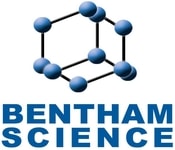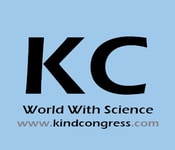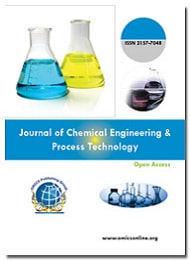Theme: Discovering the Natural Treasures to Navigate the Future
Euro Petrochemistry 2019
Conference Series LLC Ltd Conferences invites all the participants from all over the world to attend “8th International Conference on Petro Chemistry and Oil-Gas Marketing” during July 15-16, 2019 in Amsterdam,Netherlands which includes prompt keynote presentations, Oral talks, Poster presentations and Exhibitions.
Euro Petro Chemistry 2019 conference directs towards addressing main issues as well as future strategies of global energy industry. This is going to be the largest and most promising international conference where oil and gas industry professionals as well as decision makers will come to discuss and debate on various aspects of the challenges, risks and investment opportunities throughout the complete integrated energy and utilities supply chain. Petrochemistry International Conference will also provide the proper business opportunities and provide an in opportunity to make new decisions by meeting decision makes in the energy sector. Conference series LLC Ltd organizes 1000+ Global Events inclusive of 300+ Conferences, 500+ Upcoming and Previous Symposiums and Workshops in USA. Europe & Asia with support from 1000 more scientific societies and publishes 700+ Open access journals which contains over 30000 eminent personalities, reputed scientists as editorial board members.
Why to attend???
With members from around the world focused on learning about petrochemistry and its advances; this is the best opportunity to reach the largest assemblage of participants from the petroleum community. Conduct presentations, distribute information, meet with current and potential scientists, make a splash with new researches and its developments, and receive name recognition at this 2-days event at petrochemistry conference. World-renowned speakers, the most recent techniques, developments and the newest updates in petroleum industry are hallmarks of this conference.
Target Audience:
- Petroleum Students, Scientists
- Petroleum, Oil and Gas Researchers
- Petroleum and Chemistry Faculty
- Chemical Colleges
- Petroleum Associations and Societies
- Business Entrepreneurs
- Training Institutes
- Software developing companies
- Manufacturing Companies
- Data Management Companies
- Petroleum engineering companies
- Oil and gas companies
Track 1: Petro Chemistry and Process Engineering
Chemical obtained either directly from cracking (pyrolysis), or indirectly from chemical processing, of petroleum Oil or natural gas. Major petrochemicals are acetylene, benzene, ethane, ethylene, methane, propane, and hydrogen, from which hundreds of other chemicals are derived. These derivatives are used as elastomers, fibres, plasticizers, and solvents, and as feedstock for production of thousands of other products.
Process Engineering is a major step in Petrochemical industry & for the design, construction, maintenance and improvement of large equipment and facilities which are used for processing and producing oil and gas - either onshore or offshore.
- Electrochemistry and Electrochemical Engineering
- Petroleum Refining and Petrochemicals
- Atmospheric and Vacuum distillation
- Conversion Processes – Decomposition, Unification, Alteration or Rearrangement
- Crude Oil Desalting and Distillation
- Solvent Extraction and Dewaxing
- Thermal, Catalytic and Hydro Cracking
- Catalytic Reforming and Hydro-treating
- Isomerisation and Polymerisation
- Sweetening and Treating Process
- Saturated and Unsaturated Gas Plants
- Asphalt Production
- Lubricant, Wax, and Grease Manufacturing Processes
- Crystallization
- Unit Operations and Separation Processes
Recommended: Petrochemistry Conferences | Chemical Engineering Events | Chemistry Events | Polymer Chemistry Conferences | Environment Chemistry Meetings
Track 2: Chemical and Biochemical Engineering
Chemical and biochemical engineering are at the core of the conversion of any kind of raw materials into substances and products required by modern society.
Chemical engineers and biochemical engineers head the research into and development of methods for large-scale production of drugs, inexpensive production of basic chemicals and fuels, and the economic production of advanced materials used in a wide range of areas – including communication, IT, health, and transport.
Research into and development of methods for preventing and remedying environmental problems in relation to chemicals in the production, as well as research into and development of methods for sustainable chemical and biochemical energy conversion are also key fields of activity.
- Reservoir Engineering
- Agrochemicals
- Biofuel from algae
- Bioprocess engineering
- Electrochemical energy conversion
- Moss and Photo bioreactor
- Modern Thermodynamics
- Food Technology
- Industrial Separation Techniques
- Water Science and Technology
- Pharmaceutical Engineering
- Materials Science
Recommended: Petrochemistry Conferences | Chemical Engineering Events | Chemistry Events | Polymer Chemistry Conferences | Environment Chemistry Meetings
Track 3: Geology and Exploration
Geological prospecting and exploration for oil and gas is a set of industrial and R&D activities for geological study of subsurface resources, identification of promising areas, and discovery of fields, their evaluation and pre-development. The final objective of geological prospecting is preparation of subsurface resources. The main principle of geological prospecting is the comprehensive geological study of subsurface resources when along with oil and gas exploration all associated components (petroleum gas and its composition, sulphur, rare metals, etc.), possibility and practicality of their production or utilization are investigated; hydrogeological, coal mining, engineering, geological and other studies are performed; natural, climatic, socioeconomic, geological engineering and economic indicator and their changes caused by future field development are analyzed.
- Exploration Strategy
- Geophysical Methods
- Geohazards and Sea Bed Service
- Seismic Data Acquisition, Processing and Interpretation Technique
- Structural Development and Basin Evolution
- Geochemistry
- Coal Geology
- Methods used in Petroleum Geology
Recommended: Petrochemistry Conferences | Chemical Engineering Events | Chemistry Events | Polymer Chemistry Conferences | Environment Chemistry Meetings
Track 4: Drilling and Well Operation
The development of drilling wells offshore in petrochemical industry offers additional energy resources. The essential seaward wellbore development process isn't altogether not quite the same as the rotational penetrating procedure utilized for arrive based boring. The primary contrasts are the sort boring equipment and changed strategies used to complete the activities in a more intricate circumstance. For offshore boring a Mechanical Properties of stable seaward stage or gliding vessel from which to penetrate must be given. These range from perpetual seaward settled or gliding stages to impermanent base bolstered or skimming boring vessels. In USA, 35% of oil is obtained through offshore development. The direction of drilling is ascertained by the dipole sharing investigation tool (DSI).
- Well Logging
- Flaring
- Offshore Drilling
- Rotary Drilling
- Land Based Drilling
- Hydraulic fracturing
- Offshore drilling
- Oil Spill and Petroleum industry
Recommended: Petrochemistry Conferences | Chemical Engineering Events | Chemistry Events | Polymer Chemistry Conferences | Environment Chemistry Meetings
Track 5: Pipelines and Transportation
Pipeline transport is the transportation of goods through a pipe. Liquids and gases are transported in pipelines and any chemically stable substance can be sent through a pipeline. Pipelines exist for the transport of crude and refined petroleum, fuels - such as oil, natural gas and biofuels - and other fluids including sewage, slurry, water, and beer. Pipelines are suitable for transporting water for drinking or irrigation over long distances when it needs to move over hills, or where canals or channels are poor choices due to considerations of evaporation, pollution, or environmental impact.
Oil pipelines are made from steel or plastic tubes which are usually buried. The oil is moved through the pipelines by pump stations along the pipeline. Natural gas (and similar gaseous fuels) are lightly pressurised into liquids knows as Natural Gas Liquids (NGLs). Natural gas pipelines are constructed of carbon steel. Highly toxic ammonia is theoretically the most dangerous substance to be transported through long-distance pipelines, but accidents have been rare. Hydrogen pipeline transport is the transportation of hydrogen through a pipe. District heating or tele-heating systems use a network of insulated pipes which transport heated water, pressurized hot water or sometimes steam to the customer. Pipelines conveying flammable or explosive material, such as natural gas or oil, pose special safety concerns and there have been various accidents. Pipelines can be the target of vandalism, sabotage, or even terrorist attacks. In war, pipelines are often the target of military attacks. Topics like Power and Generation of heat, Renewable energy by bio-system engineering, Bioprocess control parameters.
- Pipe Line Design, Laying, and Integration
- Intelligent Pigging—Pipelines
- Pipelines and geopolitics
- Pipeline Flow Assurance
- Mixing Fluid Streams
- District heating
- Slurry pipeline
- Gas-grid injection
- Leak detection systems
- Hazard identification
- Spill frequency-volume
- Benzene fate and transport
Recommended: Petrochemistry Conferences | Chemical Engineering Events | Chemistry Events | Polymer Chemistry Conferences | Environment Chemistry Meetings
Track 6: Onshore and Offshore Support
Offshore drilling is a mechanical process where a wellbore is drilled below the seabed. It is typically carried out in order to explore for and subsequently extract petroleum which lies in rock formations beneath the seabed. Most commonly, the term is used to describe drilling activities on the continental shelf, though the term can also be applied to drilling in lakes, inshore waters and inland seas.
Offshore drilling presents environmental challenges, both from the produced hydrocarbons and the materials used during the drilling operation. Controversies include the on-going US offshore drilling debate.
There are many different types of facilities from which offshore drilling operations take place. These include bottom founded drilling rigs (jackup barges and swamp barges), combined drilling and production facilities either bottom founded or floating platforms, and deep-water mobile offshore drilling units (MODU) including semi-submersibles and drill-ships. These are capable of operating in water depths up to 3,000 metres (9,800 ft). In shallower waters the mobile units are anchored to the seabed, however in deeper water (more than 1,500 metres (4,900 ft) the semisubmersibles or drill-ships are maintained at the required drilling location using dynamic positioning.
- Offshore Vessels
- Brownfield Management
- Rig Fleet Management
- Offshore Field Optimization
- Offshore Development
Recommended: Petrochemistry Conferences | Chemical Engineering Events | Chemistry Events | Polymer Chemistry Conferences | Environment Chemistry Meetings
Track 7: Upstream, Downstream and Midstream Integration
Upstream oil and gas operations identify deposits, drill wells, and recover raw materials from underground. This sector also includes related services, such as rig operations, feasibility studies, and machinery rental and extraction chemical supply. Many of the largest upstream operators are the major diversified oil and gas firms, such as Exxon-Mobil.
Midstream operations link the upstream and downstream entities. Midstream operations mostly include resource transportation and storage, such as pipelines and gathering systems. Kinder Morgan and Williams Companies are two examples of midstream firms.
Refineries and marketing are major tasks in Downstream operations. These services turn crude oil into usable products such as gasoline, fuel oils, and petroleum-based products. Marketing services help move the finished products from energy companies to retailers or end users. Marathon Petroleum and Phillips 66 are two noteworthy examples of downstream companies.
- Midstream/Upstream Interface Optimisation
- Coal bed methane
- Hydrocarbon exploration
- Natural gas condensate
- Natural-gas processing
- Streamline Simulation
- Oil Refining Technologies
- Target Refining and Petrochemical Integration
- Transportation and Marketing Challenges
- EPC Capability & Capacity
Recommended: Petrochemistry Conferences | Chemical Engineering Events | Chemistry Events | Polymer Chemistry Conferences | Environment Chemistry Meetings
Track 8: Biopolymer Chemistry and Research
Biopolymers are polymers created by living beings; as it were, they are polymeric biomolecules. Since they are polymers, biopolymers contain monomeric units that are covalently attached to shape bigger structures. There are three fundamental classes of biopolymers, ordered by the monomeric units utilized and the structure of the biopolymer framed: polynucleotides (RNA and DNA), which are long polymers made out of at least 13 nucleotide monomers; polypeptides, which are short polymers of amino acids; and polysaccharides, which are frequently straight fortified polymeric starch structures. Other cases of biopolymers incorporate elastic, suberin, melanin and lignin.
- Routes to drop-in monomers and bio plastics
- Future and Scope for Biopolymers and Bio plastics
- Industrial Biotechnology and Bio refineries
- Plastic Pollution and Waste Management
- Biocomposite materials
- Biomaterials and Biopolymers
- Production and Commercialization
- Biopolymer Companies and Market
- Bio based Thermosetting Polymers
- Flory–Huggins solution theory
- Cossee-Arlman mechanism
Recommended: Petrochemistry Conferences | Chemical Engineering Events | Chemistry Events | Polymer Chemistry Conferences | Environment Chemistry Meetings
Track 9: Biofuels and Bioenergy
Bioenergy describes any energy source based on biological matter – everything from an dung cooking fire or a biomass power station to ethanol-based car fuel. Unlike oil, coal or gas, bioenergy counts as a renewable energy option, because plant and animal materials can be easily regenerated. At present, bioenergy accounts for the majority of renewable energy produced globally.
Bioenergy is often considered to be environmentally friendly because, in theory, the CO2 released when plants and trees are burned is balanced out by the CO2 absorbed by the new ones planted to replace those harvested. However, the environmental and social benefits of bioenergy are hotly contested – especially in the case of biofuels, which are often produced from food crops such as palm oil, corn or sugar.
The biofuels is sometimes used interchangeably with bioenergy, though more commonly it's used specifically to describe liquid bioenergy fuels such as biodiesel (a diesel substitute) and bioethanol (which can be used in petrol engines).
- Production of Biofuels
- Bioenergy Applications
- Biomass
- Biogas
- Bioethanol
- Aviation biofuels
- Bio-refineries
- Biodiesel
- BioEthanol for Sustainable Transport
- Greenhouse gas emissions
- Ecological sanitation
Recommended: Petrochemistry Conferences | Chemical Engineering Events | Chemistry Events | Polymer Chemistry Conferences | Environment Chemistry Meetings
Track 10: Catalysis and Pyrolysis
This field amalgamate facet of organic, organometallic, and inorganic chemistry. Synthesis forms a considerable component of most programs in this area. Mechanistic scrutiny are often undertaken to discover how an unexpected product is formed or to rearrange the recital of a catalytic system. Because synthesis and catalysis are essential, to the construction of new materials, Catalysts are progressively used by chemists busy in fine chemical synthesis within both industry and academia.
Reorganization of a compound into smaller and simpler compounds, or compounds of lofty molecular weight, under elevated temperatures usually in the range of 400°C to 800°C to as high as 1400°C. It differs from combustion in that it occurs in the absence of air and therefore no oxidation takes place. The pyro-lytic disintegration of wood forms a large number of chemical substances. Some of these chemicals can be used as substitutes for conventional fuels. The dispersal of the products varies with the chemical composition of the biomass and the operating conditions.
- Kinetics and catalysis
- Catalysis for Chemical Synthesis
- Bio-catalysis, Biotransformation
- Organometallic catalysis and Organ catalysis
- Spectroscopy in Catalysis
- Photo catalysis and Nano Catalysis
- Environmental and green catalysis
- Polymer Engineering
- Karrick process
- Gasification
- Applications of analytical pyrolysis
Recommended: Petrochemistry Conferences | Chemical Engineering Events | Chemistry Events | Polymer Chemistry Conferences | Environment Chemistry Meetings
Track 11: Industrial Biotechnology and Bioprocessing
To produce materials for industry, like chemicals, plastics, food, agricultural and pharmaceutical products and energy carriers. Industrial biotechnology, which is often referred as white biotechnology utilizes microorganisms and enzymes. Waste generated from agriculture and forestry and renewable raw materials are used for the production of industrial goods. It also contributes to lowering of greenhouse gas emissions and moving away from a petrochemical based economy.
Bioprocess engineering is an essential component for rapid conversion of bio products from the laboratory to a manufacturing scale. This makes the benefits of biotechnology on a large scale at a reasonable cost for common people. Bioprocess engineering may include the work of mechanical, electrical, and industrial engineers to apply idea and knowledge of their domains and process based on using living cells.
- Molecular Biosensing, Biorobotics and Biomarkers
- Biotechnology in Vaccine Production
- Enzyme Engineering and Drug Discovery
- Biochemistry and Protein Engineering
- Biomaterials, Bio polymers & Biosensors
- Bioinformatics, Systems Biology and Computational Biomedicine
- Microbial Biotechnology and Food Processing
- Pharmaceutical and Medical Biotechnology
- Petroleum Biotechnology and Green chemicals
- Industrial and Chemical Biotechnology
- Environmental Biotechnology and Waste Water Management
Recommended: Petrochemistry Conferences | Chemical Engineering Events | Chemistry Events | Polymer Chemistry Conferences | Environment Chemistry Meetings
Track 12: Green Catalysis and Sustainable Energy
Green chemistry otherwise called as sustainable chemistry, which is part of chemistry and chemical engineering focused on designing products and by minimizing the generation and use of hazardous substances .whereas, environmental chemistry focuses on the effects chemicals polluting the nature, green chemistry focuses on technological ways to prevent pollution and by reducing the consumption of non-renewable resources.
Catalysis is the defined as the substance which only alters the rate of the reaction without changing is nature. In order to achieve objectives of the Green chemistry, catalysis plays a fundamental role. The main goal of green chemistry is to provide an eco-friendly, reusable, recyclable and minimum waste production and green catalysis design the chemical products in a way that reduces or eliminates the use and generation of hazardous substances.
Application of Green chemistry and its application strongly support the development of greener concepts in process parameters, selection of compounds and resulting environmental aspects. Successful implementation of green chemistry research helps in analysing of new and existing green chemistry technologies are improving the environmental impacts of chemical products and processes with qualitative and quantitative benefits to the environment.
- Design of Next Generation Catalysis
- Nanotechnology and Green catalysis
- Smart-grid technology
- Green energy and green power
- Green Chemistry in Pharmaceuticals
- Green catalysis in Petrochemical Industries
- Green catalysis and Pollution control
- Enhanced geothermal system
- Green economy
Recommended: Petrochemistry Conferences | Chemical Engineering Events | Chemistry Events | Polymer Chemistry Conferences | Environment Chemistry Meetings
Track 13: Gas Supply and Gas Technology
Industrial gases are a group of gases that are specifically manufactured for use in a wide range of industries, which include oil and gas, petrochemistry, chemicals, power, mining, steelmaking, metals, environmental pollution, medicine, pharmaceuticals, biotechnology, food, water, fertilizers, nuclear power, electronics and aerospace. Their production is a part of the wider chemical Industry (where industrial gases are often seen as "speciality chemicals").
The principal gases provided are nitrogen, oxygen, carbon dioxide, argon, hydrogen, helium and acetylene; although a huge variety of natural gases and mixtures are available in gas cylinders. The industry producing these gases is known as the industrial gases industry, which is seen as also encompassing the supply of equipment and technology to produce and use the gases.
Whilst most industrial gas is usually only sold to other industrial enterprises; retail sales of gas cylinders and associated equipment to tradesmen and the general public are available through gas local agents and typically includes products such as balloon helium , dispensing gases for beer kegs, welding gases and welding equipment, LPG and medical oxygen.
- Gas Conversion Technologies
- Gas Compression
- Sources of Supply & Demand
- Gas Field Developments
- Gas Storage and Transport
Recommended: Petrochemistry Conferences | Chemical Engineering Events | Chemistry Events | Polymer Chemistry Conferences | Environment Chemistry Meetings
Track 14: Modelling and Simulation
Simulation modeling is the process of creating and analyzing a digital prototype of a physical model to predict its performance in the real world. Simulation modeling is used to help engineers understand whether, under what conditions, and in which ways a part could fail and what loads it can withstand. Simulation modeling can also help predict fluid flow and heat transfer patterns. Simulation modeling allows designers and engineers to avoid repeated building of multiple physical prototypes to analyze designs for new or existing parts. Before creating the physical prototype, users can virtually investigate many digital prototypes.
- Mathematical Modeling in Chemical Engineering
- Modeling of Bioprocesses
- Simulation and Separation Equipment Design
- Simulation, Optimization, Planning and Control of Processes
- Monte Carlo Method
- Agent-based Model
- Individual-Based Models
- Microscale and Macroscale Models
Recommended: Petrochemistry Conferences | Chemical Engineering Events | Chemistry Events | Polymer Chemistry Conferences | Environment Chemistry Meetings
Track 15: Nano Science and Nano Chemistry
Nano chemistry can be characterized by concepts of size, shape, self-assembly, defects and bio-Nano; So, the synthesis of any new Nano-construct is associated with all these concepts. Nano-construct synthesis is dependent on how the surface, size and shape will lead to self-assembly of the building blocks into the functional structures; they probably have functional defects and might be useful for electronic, photonic, medical or bioanalytical problems. Nano Materials and Nanoparticle examination is right now a region of serious experimental exploration, because of a wide range of potential applications in biomedical, optical, and electronic fields. Nanotechnology is helping to considerably develop, even revolutionize, different technology and industry sectors: information technology, Renewable energy, environmental science, medicine, homeland security, food safety, and transportation, among others. Regenerative nanomedicine is one of the medical applications of nanotechnology. It ranges from the medical applications of nanomaterials to Nanoelectronics biosensors, and the future applications of molecular nanotechnology, such as biological machines. Nanomedicine sales reached $16 billion in 2015, with a minimum of $3.8 billion in nanotechnology R&D being invested every year.
- Nanoelectronics Biosensors
- Tissue Engineering
- Nano Topography
- Nanomedicine
- Nano Enzymes
- Drug Delivery
- Nano Pharmaceutical Chemistry
- Organic Materials in Nanochemistry
- Nano-Electromechanically Systems
- Application and Commercialization of Nanotechnology
- Biomedical Applications and Bioelectronics
Recommended: Petrochemistry Conferences | Chemical Engineering Events | Chemistry Events | Polymer Chemistry Conferences | Environment Chemistry Meetings
Track 16: Marine Science and Marine Drug
The study of marine biology includes a wide variety of disciplines such as astronomy, biological oceanography, cellular biology, chemistry, ecology, geology, meteorology, molecular biology, physical oceanography and zoology and the new science of marine conservation biology draws on many longstanding scientific disciplines such as marine ecology, biogeography, zoology, botany, genetics, fisheries biology, anthropology, economics and law.
The marine drugs which are obtained from marine organisms are known as marine drugs. These marine drugs are used since ancient times. And interestingly, innumarable products derived from the marine organisms in several 'crude forms' have been widely used across the globe by the traditional practitioners for thousands of years.
- Deep Sea Mining
- Marine Pollution
- Marine Natural Products Chemistry
- Marine Chemical Biology
- Marine Geology
- Ocean Biogeochemistry
- Coastal Ecology
- Fisheries Biology and Management
- Marine heavy metals poisoning marine toxicology
- Ocean Acidification
Recommended: Petrochemistry Conferences | Chemical Engineering Events | Chemistry Events | Polymer Chemistry Conferences | Environment Chemistry Meetings
Track 17: Petrochemicals in Healthcare
Petrochemistry is a process which researches on the conversion of petroleum or crude oil and natural gas into raw materials and helpful products. Petrochemistry makes a huge contribution to the advancement attained in the 20th century in the fields of universal healthcare and sanitation. The majority of products in pharma is manufactured from chemicals and a significant number of these medicines are manufactured from petroleum goods.
Pharmaceutical chemical engineering is a department of Chemical Engineering that mainly deals with the design and construction of unit operations that involve biological organisms or molecules, such as bioreactors. Its applications are in the petrochemical industry, food and pharmaceutical, biotechnology, and water treatment industries.
- New Concepts and Innovations
- Safety and Hazard Developments
- Chemical Reaction Engineering
- Chemical Reactors
- Process Design and Analysis
Recommended: Petrochemistry Conferences | Chemical Engineering Events | Chemistry Events | Polymer Chemistry Conferences | Environment Chemistry Meetings
Track 18: Environmental Chemistry and Engineering
Environmental chemistry is the scientific review of the chemical and biochemical phenomena that occur in natural places. Environmental chemistry can be described as the study of the sources, reactions, transport, effects of chemical species in the air, soil, and water environments; and the effect of human activity on these. Environmental chemistry is an integrative science that includes atmospheric, aquatic and soil chemistry, as well as uses analytical chemistry. It is allied to environmental and other areas of science. It is different from green chemistry, which tries to trim potential pollution at its source.
Whereas Environmental engineering deals with the combination of sciences and engineering principles to develop the natural environment, to provide healthy air, water, and land for human habitation and for other organisms, and to procure pollution sites.
BCC research estimates that the global environmental sensor and monitoring business will grow from $13.2 billion in 2014 to nearly $17.6 billion in 2019, a compound annual growth rate (CAGR) of 5.9% for the period of 2014 to 2019. This report provides information on emerging growth areas, such as large-scale monitoring networks, analyses of global market trends, with data from 2013, estimates for 2014, and projections of compound annual growth rates (CAGRs) through 2019.
- Environmental Chemistry and Engineering
- Pollution Control Chemistry and Green Chemistry
- Environmental Toxicology and Mutagenicity
- Applications of Environmental Chemistry
- Environmental Geology
- Environmental Hazards
- Chemical and Polymer Engineering
- Renewable Energy Sources and Storages
- Environmental Technologies and sustainability Metrics
- Human population growth and Environment
Recommended: Petrochemistry Conferences | Chemical Engineering Events | Chemistry Events | Polymer Chemistry Conferences | Environment Chemistry Meetings
Track 19: Pollution Control and Sustainable Environment
Pollution prevention reduces the amount of pollution generated by industry, agriculture, or consumers. In contrast to pollution control strategies which seek to manage a pollutant after it is emitted and reduce its impact upon the environment, the pollution prevention approach seeks to increase efficiency of a process, reducing the amount of pollution generated at its source. Although there is wide agreement that source reduction is the preferred strategy, some professionals also use the term pollution prevention.
- Biogeochemical cycles
- Natural resource management
- Bioreactor
- Desalination
- Hydrogen fuel cell
- Ocean thermal energy conversion
- Photovoltaic
- Thermal depolymerisation
Recommended: Petrochemistry Conferences | Chemical Engineering Events | Chemistry Events | Polymer Chemistry Conferences | Environment Chemistry Meetings
Track 20: Health, Environment and Safety
Environment, Health & Safety (EHS) programs are so prevalent across global manufacturing organizations, at first thought, providing a definition can feel redundant and unnecessary. However, in the midst of emerging best practices, shiny new tools and technologies, and a plethora of metrics to capture and analyze events and actions
Environmental Health and Safety Managers work with and for organizations (private and public sector) to promote good working practices for employees. Mostly, they observe these organizations to ensure that they comply with environmental legislation regarding safety in the workplace. When they work in environmental roles, it is about ensuring that steps are taken to protect the environment from the actions of the organization, and ensuring that people are protected from the environment.
- Occupational Safety and Health
- Physical and Chemical hazards
- Radiological Hazards
- Hazardous Materials Management
- Construction and Decommissioning
- Wastewater and Ambient Water Quality
- Food Chemistry
Conference Highlights
- Petro Chemistry and Process Engineering
- Chemical and Biochemical Engineering
- Geology and Exploration
- Drilling and Well Operation
- Pipelines and Transportation
- Onshore and Offshore Support
- Upstream, Downstream and Midstream Integration
- Biopolymer Chemistry and Research
- Biofuels and Bioenergy
- Catalysis and Pyrolysis
- Industrial Biotechnology and Bioprocessing
- Green Catalysis and Sustainable Energy
- Gas Supply and Gas Technology
- Modelling and Simulation
- Nano Science and Nano Chemistry
- Marine Science and Marine Drug
- Petro Chemistry and Healthcare
- Environmental Chemistry and Engineering
- Pollution Control and Sustainable Environment
- Health, Environment and Safety
To share your views and research, please click here to register for the Conference.
To Collaborate Scientific Professionals around the World
| Conference Date | July 15-16, 2019 | ||
| Sponsors & Exhibitors |
|
||
| Speaker Opportunity Closed | Day 1 | ||
| Poster Opportunity Closed | Click Here to View | ||
Useful Links
Special Issues
All accepted abstracts will be published in respective Our International Journals.
- Modern Chemistry and Application
- Journal Of Chemical Engineering & Process Technology
- Journal Of Advanced Chemical Engineering
Abstracts will be provided with Digital Object Identifier by



































































